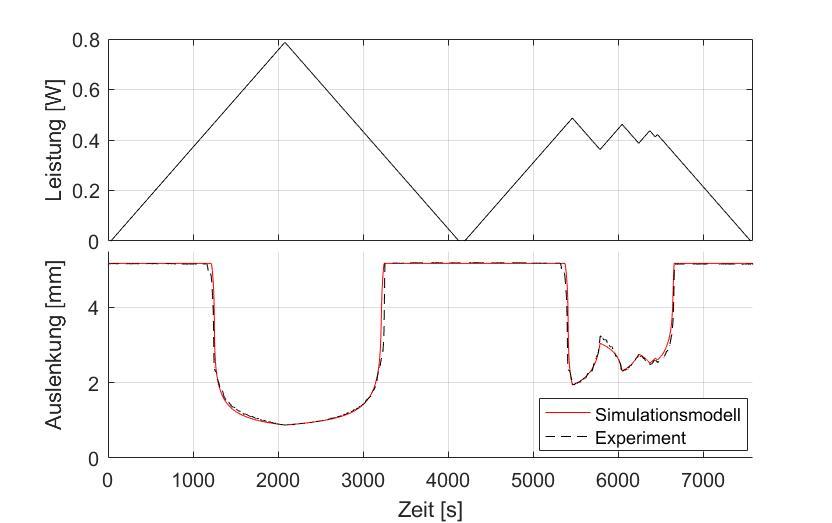Shape memory alloy modeling
The behavior of shape memory alloys is complex and highly nonlinear. In order to be able to optimize the actuator design at an early stage of development, models are needed that represent this behavior as accurately as possible. In addition, models enable a better understanding of the interrelationship between the different variables.
Models are also essential for the control of SMA actuators. They can provide the basis for the design of the control loop - or be part of the controller themselves ("model-based control"). They also provide valuable services in the diagnosis of built-up prototypes or functional models.
Model development is therefore a core activity of the research work in our laboratory. It provides the starting point for a systematic and target-oriented development work.
Requirements
An SMA model should
- describe the behavior of the SMA wire accurately
- require a small number of parameters
- be mathematically simple
- be invertible (ie. exchange inputs and outputs)
- be easy to use without the need for expert knowledge
Modeling approach
There is a great variety of approaches to modeling shape memory alloys. Our lab takes a macroscopic and phenomenological approach. "Macroscopic" means that we look at the shape memory wire as a whole (rather than individual grains or crystals). "Phenomenological" means that we try to reproduce the input-output behavior as accurately as possible (and not so much the physical processes in the material).
Our model is modular and makes a strict distinction between the material level and the actuator level. The user models the actuator geometry at the actuator level and does not have to deal with the details of the material model. A core element of the material model is an innovative transition function developed in our lab, which provides the basis for modelling the complex behavior of the real SMA material accurately. This is also shown in the following graph, which compares the deflection of an SMA wire with varying heating power in an experiment and in simulation.
The model is already being used in industry. At the same time, it is improved continuously in our lab.

